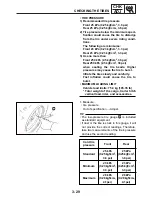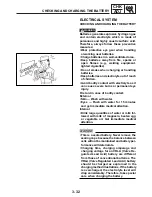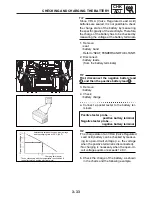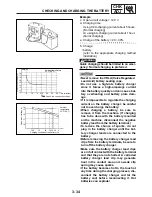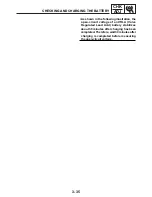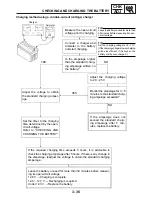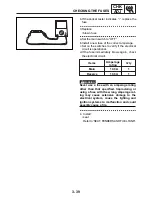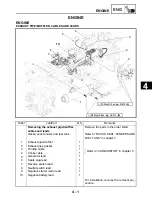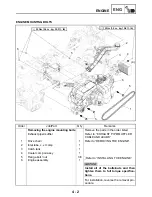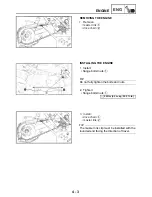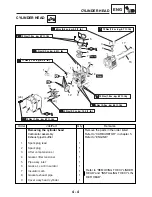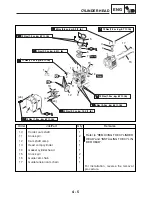
Example
c. Open-circuit voltage = 12.0 V
d. Charging time
e. Charge of the battery = 20 ~ 30%
5. Charge:
• battery
(refer to the appropriate charging method
illustration)
• Never remove the VRLA (Valve Regulated
Lead Acid) battery sealing caps.
• Do not use a high-rate battery charger
since it forces a high-amperage current
into the battery quickly and can cause bat-
tery overheating and battery plate dam-
age.
• If it is impossible to regulate the charging
current on the battery charger, be careful
not to overcharge the battery.
• When charging a battery, be sure to
remove it from the machine. (If charging
has to be done with the battery mounted
on the machine, disconnect the negative
battery lead from the battery terminal.)
• To reduce the chance of sparks, do not
plug in the battery charger until the bat-
tery charger leads are connected to the
battery.
•Before removing the battery charger lead
clips from the battery terminals, be sure to
turn off the battery charger.
• Make sure the battery charger lead clips
are in full contact with the battery terminal
and that they are not shorted. A corroded
battery charger lead clip may generate
heat in the contact area and a weak clip
spring may cause sparks.
• If the battery becomes hot to the touch at
any time during the charging process, dis-
connect the battery charger and let the
battery cool before reconnecting it. Hot
batteries can explode!
Charging
Open-
c
ir
cuit
v
o
ltage
(V)
Ambient temperature
20°C (68°F)
Check the open-circuit voltage.
Time (minutes)
0
4
0
5
0
6
0
2
15
13
11
18
10
12
14
16
17
10
0
30
Ambient
temperature
20°C (68°F)
Charging condition of the battery (%)
Open-circuit
v
o
ltage
(V) 13
11
10
12
14
100
75
50
30 25 20
0
Using 0.9A-charging current about 5 hours.
(Normal charging)
Or using 4A-charging current about 1 hour.
(Quick charging)
Quick charging should be limited to an emer-
gency; Normal charging is preferred.
CHECKING AND CHARGING THE BATTERY
CHK
ADJ
WARNING
რ
NOTICE
3 - 34










